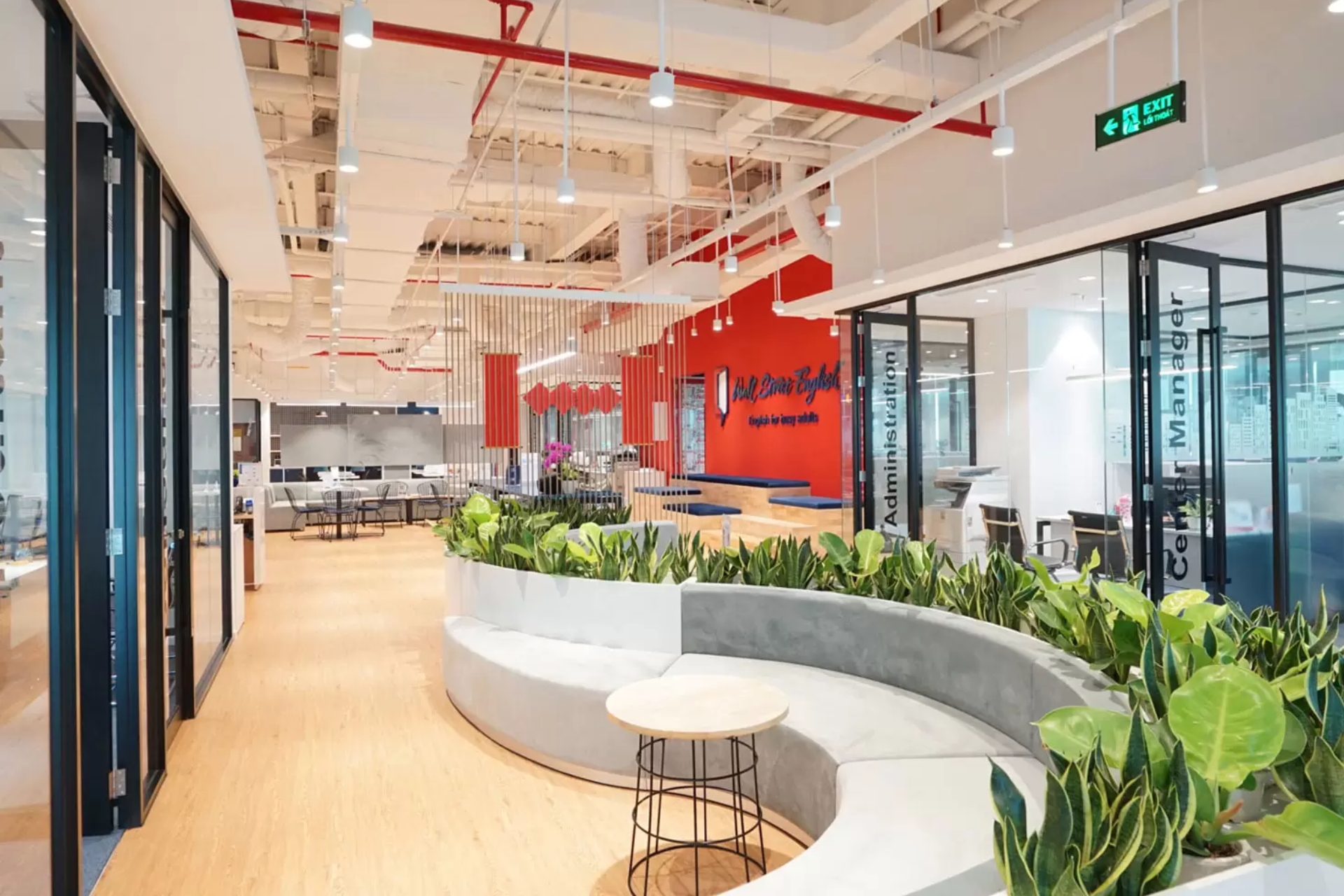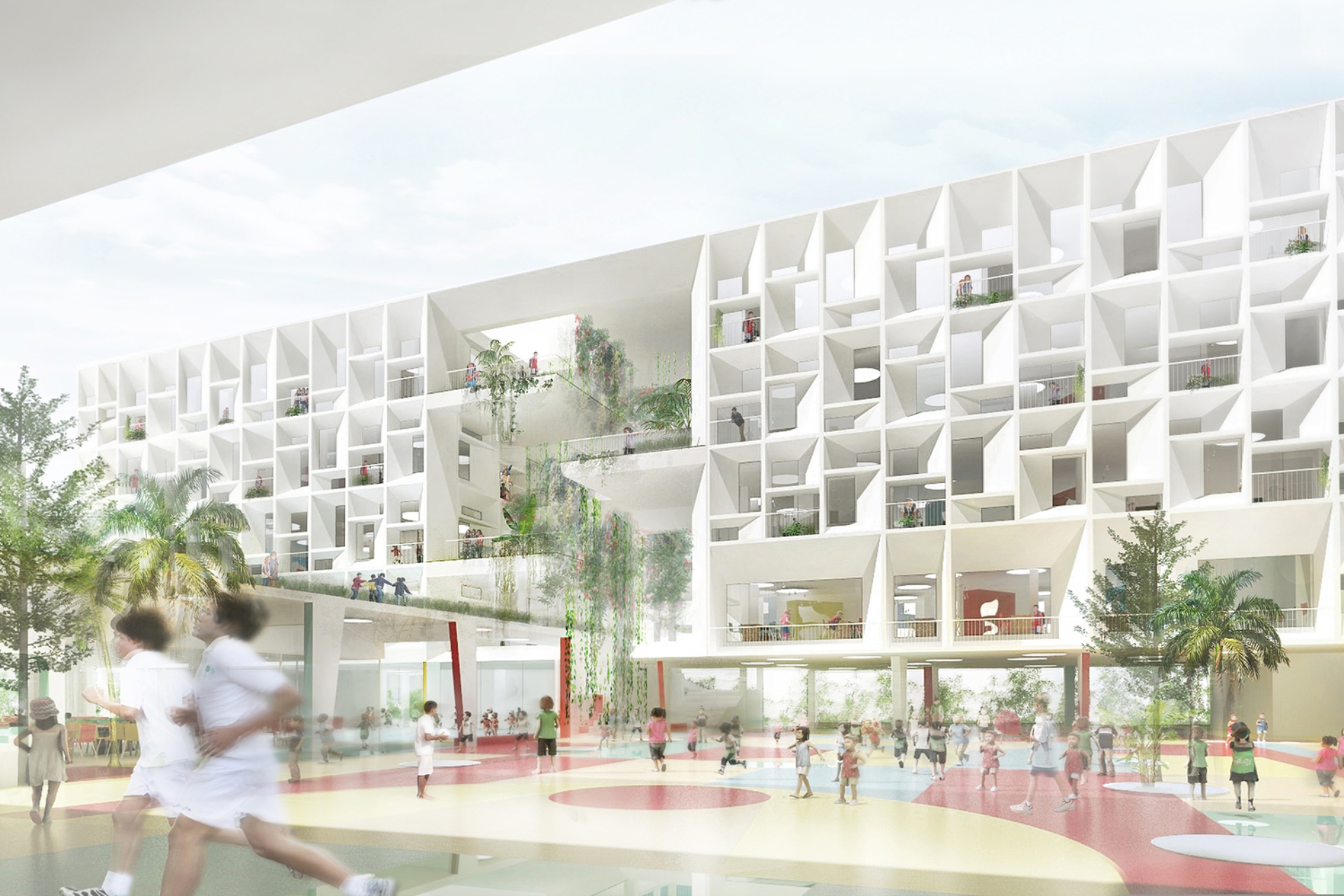
Explore the Most Standard Principles for Designing International School Libraries
In a modern educational environment, especially in international schools, the library is no longer just a place for storing books but has become a “learning center.” This is a place that fosters self-study, critical thinking, and student creativity. A library designed to international standards helps optimize the learning experience, support teachers, create flexible spaces, and inspire academic engagement. Let TECO guide you through the principles of designing international school libraries in the article below.
1. Learner-Centered
The philosophy of “learner-centered” is always the guiding compass in the design of international schools, and the library is where this principle is most clearly reflected. The library space must help students feel comfortable, safe, and inspired to explore. Instead of focusing solely on organizing books, modern design pays more attention to user experience and learner behavior.
For example: Applying a learner-centered approach by:
-
Reading areas for young children use low-height furniture and friendly colors.
-
Secondary students can access quieter zones for in-depth research.
-
The library is organized by levels of experience rather than solely by book topics.
 Learner-centered library design
Learner-centered library design
2. Flexibility & Adaptability
Modern libraries not only serve traditional reading but also host countless other learning activities such as group discussions, workshops, project presentations, assignment work, or club activities. This makes flexibility one of the most important principles when designing libraries for international schools.
A flexible space is one that can quickly change according to needs. Instead of fixed shelves, many libraries use low, lightweight, movable shelves. Tables and chairs are designed in modular formats, allowing students to combine them into group tables or separate them for individual use. Open spaces are also prioritized to create a sense of spaciousness and reduce fragmentation caused by walls.
As a result, the library can become a small classroom in the morning, a discussion zone at noon, and a talk-show venue in the afternoon. Flexibility helps the library align more closely with the “Learning Commons” model – where all forms of learning are optimally supported.
 Flexible library design
Flexible library design
3. Digital Integration
Technology is an indispensable element in international schools, and the library is the convergence point of the technological ecosystem that supports learning. If in the past, libraries mainly provided printed books, today digital resources play an essential role and strongly influence learning methods.
Technology solutions integrated:
-
E-library system: allowing students to access thousands of documents from anywhere.
-
Smart search screens, interactive boards, iPad stations.
-
RFID for fast book borrowing and returning, reducing library staff workload.
Technology helps students access richer resources; develop digital skills; and learn through blended learning – a combination of traditional and online learning. A modern international school library always ensures that technology supports students in exploration and creativity, rather than replacing traditional learning experiences.
 Technology application directly in the library
Technology application directly in the library
4. Natural Light Maximization & Acoustic Standards (Biophilic & Acoustic)
One of the major differences between international school libraries and traditional libraries lies in their attention to student emotion and comfort. Biophilic design – bringing nature into the space – is widely applied in international educational facilities.
Natural light is always prioritized through large glass windows, skylights, or louver systems that offer soft brightness while reducing heat absorption. Natural light helps students increase focus, reduce stress, and improve visual health. This is an essential factor that any international school library prioritizes.
Acoustics also play a decisive role in the learning experience. Quiet spaces incorporate sound-absorbing materials, acoustic-treated gypsum ceilings, or wall panels that reduce echo. Meanwhile, group discussion areas are separated or lightly partitioned to avoid interference. Colors, wood textures, and indoor plants create a pleasant atmosphere, bringing students closer to nature in the spirit of “learning in a breathing space.”
 Optimizing natural light and acoustic standards
Optimizing natural light and acoustic standards
5. Zoning & Circulation
An international-standard library is scientifically organized through clear functional zoning and logical circulation flow. This helps students easily find resources, navigate, and utilize the space effectively.
Some basic zones of an international library include:
-
Reception & information search area
-
Display area for books, documents, and magazines
-
Quiet reading area
-
Group study area
-
Digital library – technology zone for digital search
-
Experience and relaxation area
Depending on the area, scale, and usage purpose, zoning and layout must be planned appropriately to provide the most comfortable and convenient learning and reading experience for students.
 Systematic functional zoning
Systematic functional zoning
Conclusion
The library is the heart of every international school. A library designed to international standards helps students develop holistically, stimulates learning inspiration, and builds a sustainable knowledge environment. With principles such as learner-centered design, flexibility, digital integration, natural light and acoustics, and logical zoning, the modern library is not just a reading space but a place of emotional connection, creativity, and multi-layered learning experiences.
Hopefully, through the above article, TECO has provided you with useful information on how to design an international-standard library.


